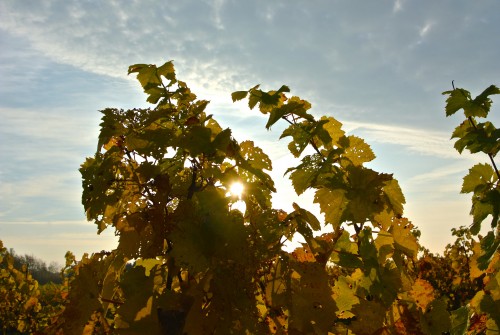 I stole the headline from Prince Edward County’s Dan Sullivan, but it aptly describes one of the whackiest, most bizarre seasons of grape growing in Ontario’s history. That anyone will be sipping 2014 wines sometime in the very near future is a miracle in itself.
I stole the headline from Prince Edward County’s Dan Sullivan, but it aptly describes one of the whackiest, most bizarre seasons of grape growing in Ontario’s history. That anyone will be sipping 2014 wines sometime in the very near future is a miracle in itself.
It started with that devastating polar vortex last winter that laid waste to several varieties of grapes. Syrah, Merlot, Semillon and Sauvignon Blanc were hit hardest in Niagara.
 Hank Hunse, owner of Small Talk Vineyards on Lake Ontario’s north shore, said last winter the unusually cold winter and lack of lake effect snow meant he’d lost nearly all of his Syrah and Sauvignon Blanc crops for 2014, with similar observations from around the Niagara peninsula.
Hank Hunse, owner of Small Talk Vineyards on Lake Ontario’s north shore, said last winter the unusually cold winter and lack of lake effect snow meant he’d lost nearly all of his Syrah and Sauvignon Blanc crops for 2014, with similar observations from around the Niagara peninsula.
Grape Growers of Ontario Chief Executive Officer Debbie Zimmerman said that certain kinds of grapes are heartier than others, with Merlot, Sauvignon Blanc and Syrah among the most vulnerable. “If the vines have been affected, that’s when we have broader concerns,” she said in the report.
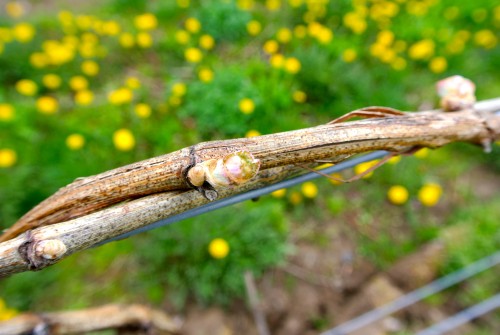 There was no doubt Niagara fared better than Lake Erie North Shore, where damage was wide-spread with some wineries reporting 100% crop loss, especially with varieties such as Syrah and Merlot, and the Finger Lakes, which was declared a “disaster area” by the U.S. Department of Agriculture.
There was no doubt Niagara fared better than Lake Erie North Shore, where damage was wide-spread with some wineries reporting 100% crop loss, especially with varieties such as Syrah and Merlot, and the Finger Lakes, which was declared a “disaster area” by the U.S. Department of Agriculture.
But even in Niagara some crops were expected to be down 50-75%, Brock University Professor Kevin Ker told Wine Researcher recently.
Ker, a grape and wine industry consultant, who lists vine winter hardiness as one of his areas of research, told Wine Researcher that he expected yields for the 2014 harvest would be down to 50-75 percent of the average crop, with some growers having even less depending on site and cultivars grown.
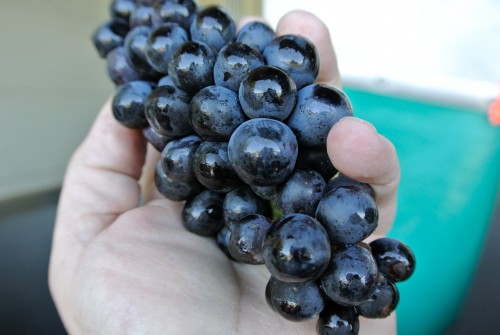
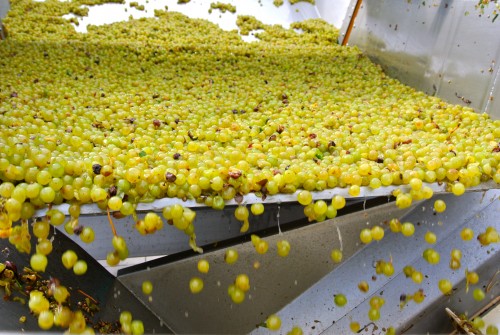
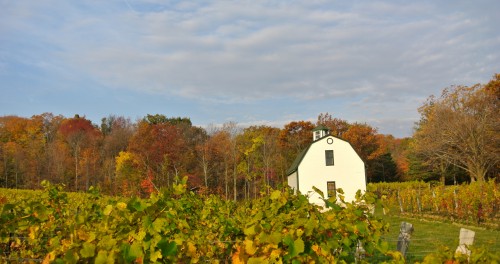 The horrible winter was met with a late spring and never fully recuperated through a coolish summer. But, as they say in Niagara, you can’t have it all. While crop loss in Merlot, Syrah, Semillon and Sauvignon Blanc was wide-spread and other Bordeaux varieties such as Cabernet Sauvignon struggled to ripen, Pinot Noir, Chardonnay, Riesling, Gamay, Pinot Gris, and, to some extent, Cabernet Franc, were all helped along by a warm fall and had winemakers singing their praises.
The horrible winter was met with a late spring and never fully recuperated through a coolish summer. But, as they say in Niagara, you can’t have it all. While crop loss in Merlot, Syrah, Semillon and Sauvignon Blanc was wide-spread and other Bordeaux varieties such as Cabernet Sauvignon struggled to ripen, Pinot Noir, Chardonnay, Riesling, Gamay, Pinot Gris, and, to some extent, Cabernet Franc, were all helped along by a warm fall and had winemakers singing their praises.
I asked a cross-section of winemakers and wineries for their thoughts now that the crop is safely being turned into wine. I have a cross-section of opinions from all regions of Niagara and Prince Edward County but couldn’t get a response from wineries in Lake Erie North Shore, which was hit hardest by the cruel winter.
Here is what they had to say in their own words and what you can expect with the 2014 wines.
Niagara
St. Davids
Wes Lowrey, winemaker at Five Rows Craft Wine
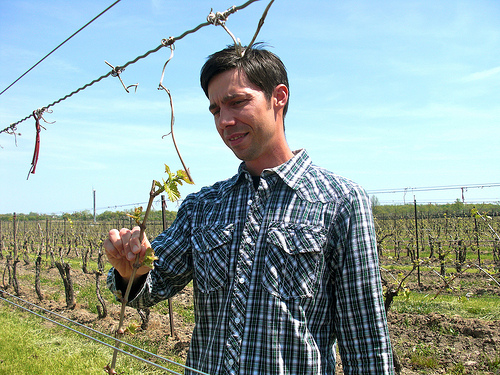 Just wrapping up the last of the cab ferments — thankfully got everything off before this winter blast! I found it to be a growing season and vintage that could be best described as “moderate.” We had moderate amounts of rain, heat, cool nights — and that was not a bad thing!
Just wrapping up the last of the cab ferments — thankfully got everything off before this winter blast! I found it to be a growing season and vintage that could be best described as “moderate.” We had moderate amounts of rain, heat, cool nights — and that was not a bad thing!
We finally had a summer without too many extreme heat events, which was great for evenly ripening our early varietals, especially whites. The lack of heat on the back end of the vintage did present a challenge for late reds, but a lighter crop that was subsequently thinned properly had no problem ripening.
I really like what I’m tasting early on, and typically years like this give wines with great ageability.
Michèle Bosc, director of marketing at Chateau des Charmes
 It was a tough winter but we fared OK. Our practices of hilling up after harvest, late spur pruning and running our wind machines as often as possible paid off.
It was a tough winter but we fared OK. Our practices of hilling up after harvest, late spur pruning and running our wind machines as often as possible paid off.
• The growing season was very good with a terrific canopy, very low disease pressure.
• September was terrific with warm sunny days and cooler nights, perfect for ripening but maintaining acidity and flavour.
• Reds will be more challenging for sure due to late ripening. That said we pulled in a very good crop of Merlot at 24Brix. Maybe the only Merlot
Niagara-on-the-Lake
Derek Barnett, winemaker Lailey Vineyards
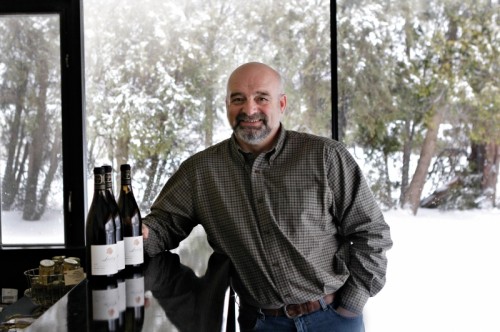 I think that the 2014 harvest has ended up really well, quite exciting, to be honest. After a late but good growing season we had an amazing fall.
I think that the 2014 harvest has ended up really well, quite exciting, to be honest. After a late but good growing season we had an amazing fall.
Good balance in the Pinot Noir and Chardonnay and terrific flavours. Rieslings are fresh with super aromatics. Reds are just finishing ferments but have great flavour and lots of colour.
A small but really good harvest of Syrah — maybe the prettiest one we have had to date, beautiful aromatics during ferments. Maybe we should just say it is a solid vintage with lots of promise!!
JL Groux, winemaker Stratus Vineyards
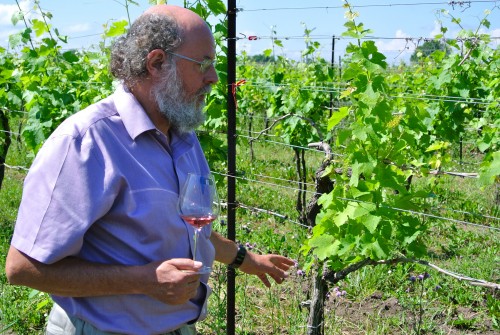 A difficult year to start with. Very cold winter, late bud-break and rainy spring and wet July. Then things went well, with a great warm/dry August and fall all the way to now in November experiencing above average temperature and low rainfalls.
A difficult year to start with. Very cold winter, late bud-break and rainy spring and wet July. Then things went well, with a great warm/dry August and fall all the way to now in November experiencing above average temperature and low rainfalls.
Overall a similar year to 2013 with great acidity on whites and good quality on reds for those that did crop lower and are patient before picking.
At Stratus we did not get hit by the winter as much as others with the lowest of -20.5 C allowing us to have full crops in sensitive varieties such as ME, SB and CS. Sangiovese and Tanat were not very affected by winter contrary to Syrah and Semillon.
I am very happy with the quality of RI, SB and GE and so far the Gamay, Sangiovese and Merlot I got recently are great.
The PV, and Cabs are coming along nicely and will be picked in the next 2 to 3 weeks.
Beamsville
Andrew Brooks, owner/winemaker Back 10 Cellars (send via newsletter)
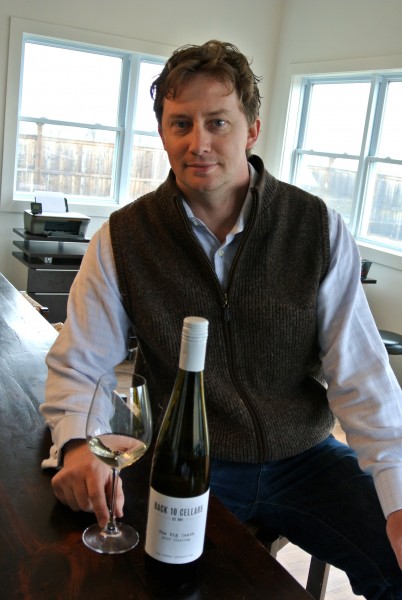 This year has been a challenge for Niagara Grape Growers. The vines had a late start due to extremely cold temperatures through the winter and into late spring. The Niagara River had ice floating in it until early May, a rare sight.
This year has been a challenge for Niagara Grape Growers. The vines had a late start due to extremely cold temperatures through the winter and into late spring. The Niagara River had ice floating in it until early May, a rare sight.
Above average precipitation through the spring was followed by cool temperatures throughout July. August was also unseasonably cool on average. However, Niagara did enjoy high exposure, sunny days with no rain for almost 4 weeks.
Niagara has also enjoyed above average seasonal temperatures mid-September and into October. Many wineries have been plagued trying to organize hand picking crews in the last few weeks in damp conditions combined with poor weather reports.
A long and slow maturation of grapes by extended hang time on the vines is certainly beneficial for phenolic ripeness & increased sugar levels. This season’s conditions have created an environment that will most certainly make interesting wines.
This is also a season where fruit crop management and “green” harvesting on varieties like Cabernet Franc will be imperative to create big, bold and powerful wines. Removing under-ripe fruit in late August improves the overall quality of the remaining grapes.
Aromatic whites such as Riesling are consistently reliable in their quality despite the amount of heat units through the summer. You can also look forward to big flavoured Chardonnay from 2014.
Emma Garner, winemaker at 30 Bench Winery
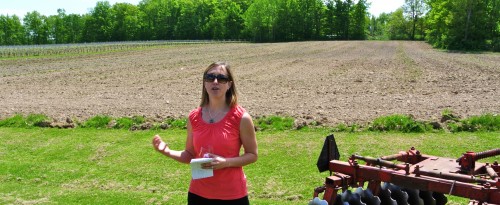
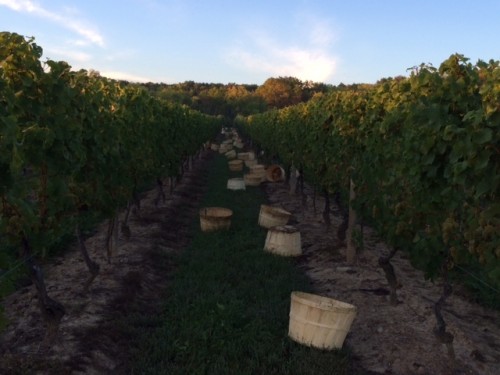
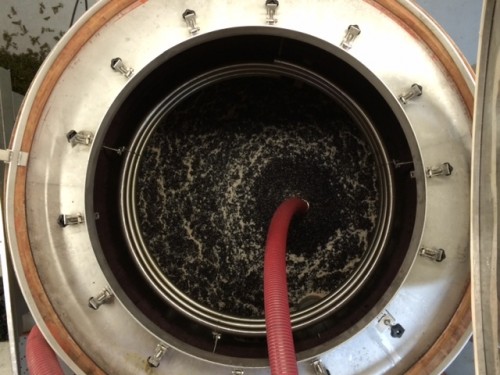 September ripeness levels began slightly behind the eight ball making the thought of ripening Bordeaux reds on the bench a seemingly unattainable goal. However, due to low cropping levels and a warmer than average October, the finish to the season looks very promising.
September ripeness levels began slightly behind the eight ball making the thought of ripening Bordeaux reds on the bench a seemingly unattainable goal. However, due to low cropping levels and a warmer than average October, the finish to the season looks very promising.
The vintage gave birth to a wonderful sparkling harvest scenario with cool days and nights allowing for slow, even ripening and natural acidity retention. This created flavourful clean fruit contributing to a wonderful sparkling base with a lively palate.
The aromatics came next starting with Pinot Gris (being harvested just shy of 24 Brix!) with lovely pear and tree fruit flavours and aromas. The Pinot Noir snuck into the wood fermentors on October 1st and with virtually no Merlot to push them out, an extended maceration was achievable (quite possibly the most exciting Pinot harvest/vinification TB has ever experienced).
At this point, a series of Riesling harvests had already began. The youngest vines from each of our blocks were picked starting on September 29th. We began to pick the older vines — pushing them through the threat of poor weather (which we gambled and luckily it never materialized). The final pick took place on October 11th concluding another successful Riesling harvest with lots of blending options.
Chardonnay hung strong until October 12th and was picked on three separate occasions (these wines are still bubbling away in a selection of French oak barriques and puncheons).
Then the race to the finish was on as frost became a threat (fortunately, we were treated to some 22 C days in the last week of October instead!).
The Cab Franc was harvested Oct. 30 filling two wood fermentors. The wine which resulted is currently demonstrating riper than expected characteristics of violets, tobacco and raspberry. The Cabernet Sauvignon yielded lower than average tonneage and is currently on skins in the wood fermentors — I feel some pleasant surprises are still in store. Unfortunately there was no Gewurztraminer due to winter damage ending harvest slightly earlier than normal for us.
2014 had the potential to be an extremely lacklustre vintage, however due to dry conditions, careful attention to viticulture, a warm fall and low humidity there will certainly be some exciting and age-worthy wines produced.
Ross Wise, winemaker Rosewood Estates
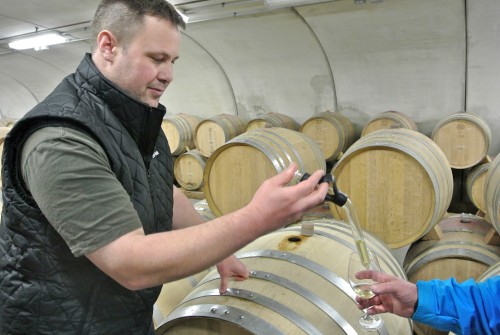 We were hit very hard by the winter, with significant losses in our Merlot, Semillon and Sauvignon Blanc blocks. So our overall crop was lower than the previous few years unfortunately.
We were hit very hard by the winter, with significant losses in our Merlot, Semillon and Sauvignon Blanc blocks. So our overall crop was lower than the previous few years unfortunately.
But that did give us plenty of time to focus on the remaining Pinot Noir, Chardonnay, Riesling, Cab Franc, and small quantities of other Bordeaux reds.
Pinot Noir came in later than usual for us, and with a slightly reduced crop. The fruit was remarkably clean, full of good ripe flavours, and very cool climate in nature (lower sugars, good acidity).
Our Chardonnay also was pristine fruit and had great acidity, and the sugars were at good levels due the low crop load. It is still early in the process, but the Chardonnay looks remarkably similar to the 2009 vintage.
Riesling seemed to develop sugar ripeness quite early, while acidity remained high due to the cool days and nights. With Riesling we were primarily waiting for flavours and aromatics to develop, so there was a wide range of picking dates for the different blocks.
All our Riesling tanks are showing good concentration, expressive aromatics, and, like everything else, great acidity. Cabernet Franc is still fermenting away at the moment, so it is a bit early to get a good indication there. But the colour is amazing! Same for Bordeaux reds.
Graham Rennie, owner Rennie Estates
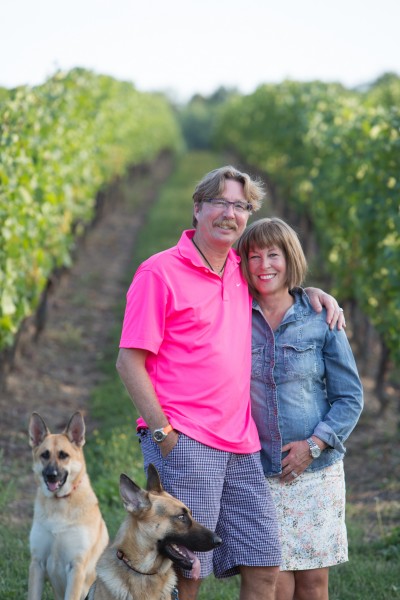 No one ever said vineyard viticulture in Ontario was easy! Suffice to say the 2104 vintage can be considered one of the most challenging in decades.
No one ever said vineyard viticulture in Ontario was easy! Suffice to say the 2104 vintage can be considered one of the most challenging in decades.
The 2014 season began with one of the coldest winters in a decade and our 15-year-old Merlot vines sustained some damage as well as significant yield reduction.
The lack of degree days made for a late bud break and a late harvest. While yields are down 50% from 2013 the quality of the fruit is excellent.
Brix levels are down but so are acids because of the cold Oct/Nov nights. Ph and phenolics were excellent.
All of my Bordeaux varietals are resting in our proprietary drying room and we will craft some beautiful wines from this fruit.
I believe we will also craft some amazing Pinot and Chardonnay.
Vineland
Brian Schmidt, winemaker Vineland Estates
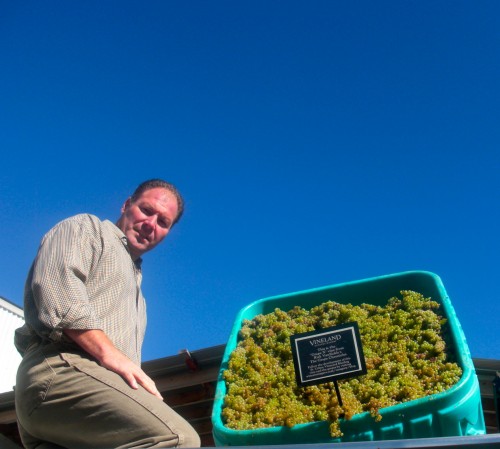 From a viticultural perspective (after) the VERY cold winter that caused bud damage and in some cases trunk damage we could not have asked for a more appropriate growing season.
From a viticultural perspective (after) the VERY cold winter that caused bud damage and in some cases trunk damage we could not have asked for a more appropriate growing season.
The cool, moist conditions ensured the vines would have little or no stress during the season ensuring the vine would have the best chance for recovery.
Had it been a year like 2007 or 2010 the vines would have to contend with heat and drought stress ( for those that lack irrigation) any additional stress could have created more mid season vine collapse.
As with all growing seasons, keeping the vines free of mildew and other problems was a priority from May until Oct. A 2-week warm dry spell in the fall encouraged not only the vines but the winemakers.
What else do we know?
The white wines from 2014 are simply wonderful, classic Ontario acidity with bright focused aromatics.
Our initial tastings show that early ripening reds will shine as well. Low pH’s will almost guarantee amazing colour and from my (Vineland Estates) vantage point we were able to use our new sorting technology to its fullest potential.
Sorting out any slightly under ripe fruit and all MOG resulted in very healthy ferments with gorgeous berry fruit aromas.
All in All a VERY promising vintage.
Craig Wismer, manager at Glen Elgin Vineyard Management

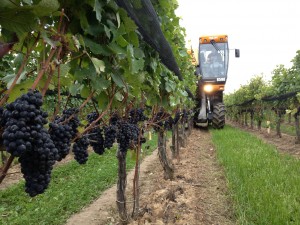
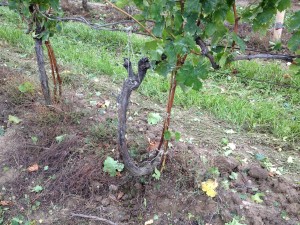
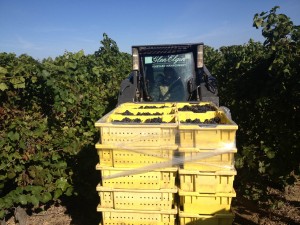
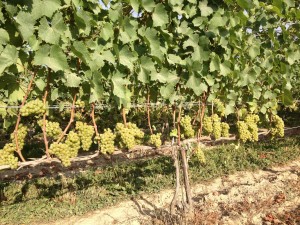
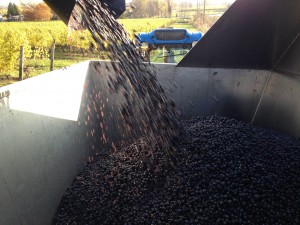 Vintage 2014 was a long one. A long, wet, uphill battle, pushing well into November for late reds. Looking back on it, it’s easy to forget, as much of the fruit was outstanding, and it looks like the wines should follow suit.
Vintage 2014 was a long one. A long, wet, uphill battle, pushing well into November for late reds. Looking back on it, it’s easy to forget, as much of the fruit was outstanding, and it looks like the wines should follow suit.
This cool, wet year kept us on our toes. In the vineyard, timing was critical. Disease and weed control were especially important. This weather was not necessarily a bad thing for vines. It is only this kind of weather that kept severely winter damaged blocks from suffering more vine collapse. We caught a brief glimpse of this potential vine collapse in the 4 weeks of warm, very dry weather in late August/September, some of the weakest vines did start to shut down, folding leaves and aborting fruit. On the positive side, these warm weeks made a huge difference for later red varieties.
We saw vineyards at both ends of the spectrum. Some; heavy trunk damage requiring training from the ground up. Others; surprisingly good yields and fruit quality, especially classic bench sites. For the most part, we were able to work with this variation as much as possible. Bud sampling and good pruning practices give us valuable information and options to compensate for the brutal winter.
Eager viticulturists will learn from events like these, modifying our practices as needed to help grow the healthiest vines through the best and worst of Niagara’s conditions. The results of good viticulture and balanced vines are easy to see. We often compare sites we have employed best management practices on for years, to the ones we have recently been hired to work on, usually because these critical steps have been skipped – trying to save a few bucks. We look at the basics of good winter damage mitigation — hilling up, maintaining vine balance, and renewing trunks. We continue to see the effects of taking shortcuts. These shortcuts can haunt a vineyard for many years. We continue to remove vineyards for others that had a high degree of vine death, largely as a result of unbalanced vines, and not hilling up.
From an operations standpoint, many seem to have a fixation on a cost per acre, above all else. We look at a cost per acre, in conjunction with a cost per tonne, as this tells more of the story. It will cost more to run a vineyard employing best management practices. However, that vineyard will be much more cost efficient over it’s lifetime, producing desired yields of clean, healthy fruit from balanced vines. This management style easily pays for itself as balanced vines have a longer lifespan, and increased production of quality fruit over said life, as well as a higher degree of winter hardiness and much less replanting.
If insanity is to do the same thing over and over, expecting different results, let’s continue to learn and grow forward as an industry. Let’s employ everything we learn from each vintage to our vineyard program for the future. Let’s plan for winter’s like this, hilling up in the fall, and down in the spring. Let’s train new trunks and leave extra canes when we have cold weather or weak vines. Good vineyard management cannot employ a “one size fits all” approach. Each vineyard is unique, it’s our job to use the subtle hints from each vine and integrate this into our ongoing vineyard plan.
St. Catharines
David Stasiuk, winemaker at Rockway Vineyards
 I don’t have a whole lot to say about this vintage besides its notable obscurity. Weird weather, weird grapes, but surprising/interesting results in finished wines.
I don’t have a whole lot to say about this vintage besides its notable obscurity. Weird weather, weird grapes, but surprising/interesting results in finished wines.
The polar vortex kicked all our asses. We experienced extreme shortages in some varieties (mainly reds) and others fared okay. Chardonnay was a funny one. Full canopies but very little fruit … and it took an eternity to ripen. Riesling was the champion with very balanced fruit loads and timely ripening based on the season’s conditions.
Chardonnay is just starting malo but is clean and focused. Rieslings are classic and showing promise. All whites were very hard to settle as juice this year … probably due to the way pectins developed off schedule with cold summer conditions.
Reds were cropped right down (below 2t/acre) before veraison to ensure we could ripen them. Even with those attempts we are still seeing a lot of green seeds. This called for shorter macerations to prevent alcohol from extracting the rough green tannins. We pressed reds off before caps fell to help keep the ripe structure without going overboard.
I would predict the reds to be similar to 2013 with perhaps a bit more colour and structure.
We crushed our first Pinot Noir this year and it looks beautiful. Ripe with perfect balance of pH/TA/Brix.
Overall all acids were very high but these were tamed before ferment to promote integration and balance.
Lots of cellar tactics this year to fight botrytis, high acids and under ripe fruit.
Prince Edward County
Dan Sullivan, Rosehall Run, Prince Edward County
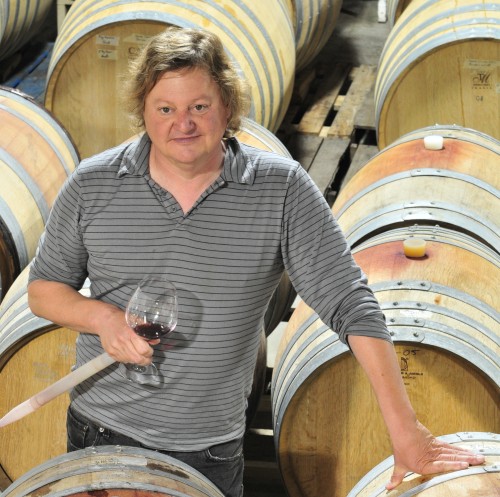 The Vintage that Came in From the Cold.
The Vintage that Came in From the Cold.
If there was ever a year where timing was everything it was 2014.
At this early stage I believe this may be the best year ever for classically structured, intense and refined Pinot Noir in my dozen years of winemaking in Prince Edward County. For Chardonnay I will hold my bets, but it will be very good at least and may well be outstanding.
The later varieties will struggle, hopefully not in vain, to achieve full ripeness.
Most of the industry, yours truly included, spent the spring and summer in a state of trepidation and concern with gusts to terror. Late, cold, wet and coming off a brutal winter-snow on the ground until mid-April-the start to the season was not good.
Fortunately, burying vines paid off with minimal bud damage although we pruned to higher bud counts than normal just in case winter had pushed deep into the soil. Ultimately this proved not to be case, but extra buds came it quite handy to soak up some the vigour once the vines woke up.
The unseasonably cool, damp spring and summer with a late slightly protracted flowering gave rise to concerns of coulure, ultimately unfounded. It did however mandate early leaf pulling, shoot thinning and in some areas early green harvest to put the meagre helpings of solar heat we got into ripening a smaller crop.
Attention to detail was everything and our staff worked tirelessly to prevent downy mildew and not allow botrytis to gain a foothold in the bunches. As summer progressed and veraison teased out to mid-August, the latest ever at Rosehall Run, I was mentally preparing for a crush much along the lines of 2006.
Then came September; September, in all its glorious, golden beauty. The weather pattern shifted and the vines shifted into another gear as well, colouring up uniformly, allowing just enough time to do some fine tuning to our cropload.
I was immediately struck by the thick dark skins and how the tannin and sugars developed while still holding good acidity.
We began harvest for sparkling on Sept. 22 and for table wines on Oct. 4 under mostly moderately warm, sunny conditions. Brief showers proved to be nothing more than a minor inconvenience and chance for the vineyard crew to do laundry and groceries.
The resulting fruit that was harvested came in clean, ripe and lean with good acidity. Yields were about average at 1.8 T/acre about 28-30 hL/hA on Pinot Noir. Our Chardonnay crop also came in with excellent flavours and balance and was one of our biggest ever at 2.7 T/acre.
At this early stage the purity of fruit, firm beam of acidity and fine grained ripe tannin suggest this will be a very cellar-worthy vintage.
In particular I am impressed by the wines coming from our North Block now in 13th and 14th leaf and also our younger planting of Pinot Noir clone 828 in our West Block.
Alongside the 2013’s these may the best back to back vintages we have made at RRV.
Bruno Francois, co-owner/winemaker The Old Third
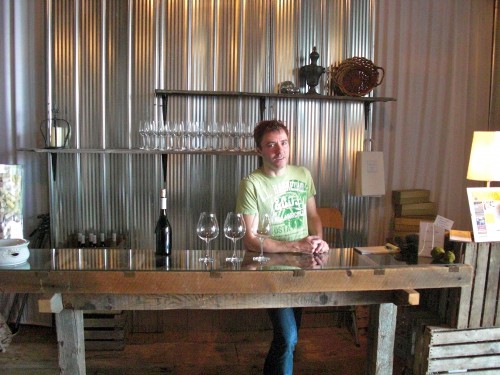 The vintage: 2014 started somewhat late and the spring was cool and rainy, although not as wet as 2013.
The vintage: 2014 started somewhat late and the spring was cool and rainy, although not as wet as 2013.
Bloom saw some sunny and dry weather and fruit set was overall quite good with the highest yield we have yet had. Fruit thinning — as difficult as it is to do — was required.
Like 2013, things did improve after flowering but it was not quite as pronounced and development through veraison was slow. There were quite a few rainy days and it did add to disease pressure. Vigilance in the vineyard is imperative in years like this.
However, not all doom and gloom. September saw some fine weather return and helped transform the vintage. Better late than never because what we got was volume and quality. I made up for the later than usual development by allowing the fruit to hang longer. On average we picked 1 month later than usual. And with Pinot in particular, extended hang time can be harrowing and requires significant logistics.
The wines: The extended hang time gave me wines with intense colour and flavour. There is a lot of tannin in the reds but they are very ripe like in 2013. I think 2014 will be a vintage to lay down. We used the greater yield to make sparkling so there will be an “A la volee 2014.”
Come taste the wines for yourself. I am as happy with them as I was with the 2013’s. They are rich and chewy and dark as the night is long in December.






Comment here